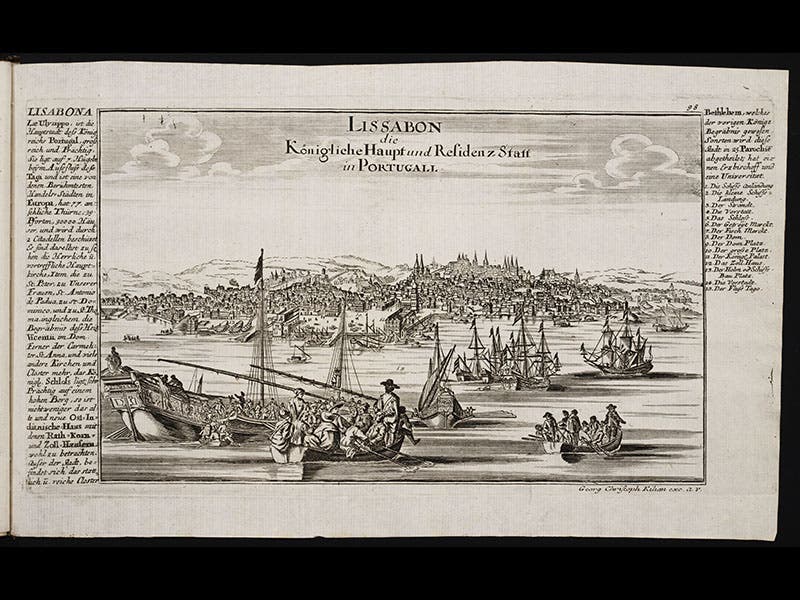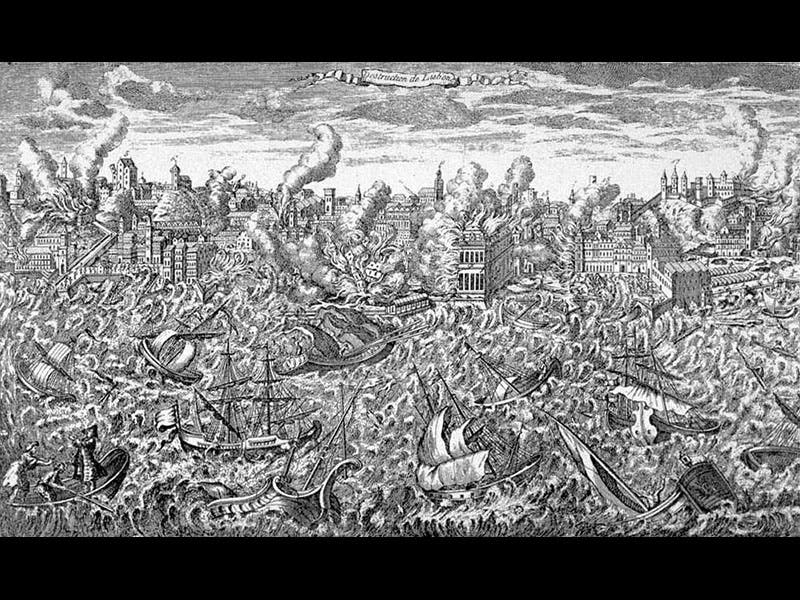Scientist of the Day - Johann Andreas Maschenbauer

Linda Hall Library

Linda Hall Library

Linda Hall Library

Linda Hall Library
The great Lisbon earthquake occurred on Nov. 1, 1755. The churches and streets of Lisbon were packed as this all-Catholic city celebrated All-Saints' day, when the tremor hit at about 9:30 in the morning. It is estimated to have been a magnitude 8.5 quake, which is quite devastating, and the city was leveled, and nearly 100,000 of its citizens were killed. Many other places suffered as well--Tangier was heavily damaged, and Casablanca was completely destroyed--but Lisbon endured the brunt of the quake and the bulk of the damage, and the event has been named after Lisbon ever since. In addition to suffering from seismic assault, the city was also battered by tsunamis and wracked by a city-wide fire. The fact that the destruction took place on a holy day was shocking to Catholic Portugal, since disasters like this were commonly attributed to divine causes, and no one was quite sure what to make of a God who would wreak such havoc.
Andreas Maschenbauer was a writer and newspaper publisher in Augsburg. In 1754, he had sold his newspaper business, so when the Lisbon earthquake struck, he had time on his hands and an urge to write about this devastating event. Less than two months later, he published Angestellte Betrachtungen über die den 1. November 1755 so ausserordentliche Erdbeben und Meeresbewungen (On-site Observations of the extraordinary Earthquake and Movement of the Sea that occurred on 1 November 1755). We acquired a copy of this book just 2 months ago from the Massachusetts rare book dealer Jeffrey Mancevice. It was the first publication on the Lisbon earthquake to appear in print, and Maschenbauer even managed to include several eye-witness reports, although there was hardly time for news to travel from Portugal to Augsburg in that interval. Maschenbauer included 9 folding plates--three color maps of Europe, Africa, and Iberia, and 6 views of Lisbon and other port cities. We display three of these (and the title page) above. Almost certainly, these were existing illustrations pulled from other works, as he had no time to commission new ones. Perhaps that is why there is no engraving in the book of the earthquake itself. For that, we have to rely on ephemeral broadsheets, such as the engraving above (fifth image).
Voltaire made the Lisbon earthquake a central episode in his satire Candide, published four years later in 1759. Candide witnessed the destruction in Lisbon and was at a loss how to reconcile it with his mentor's mantra that this is the best of all possible worlds. Surely, Candide thought, the best must be better than this.
Dr. William B. Ashworth, Jr., Consultant for the History of Science, Linda Hall Library and Associate Professor, Department of History, University of Missouri-Kansas City. Comments or corrections are welcome; please direct to ashworthw@umkc.edu.







